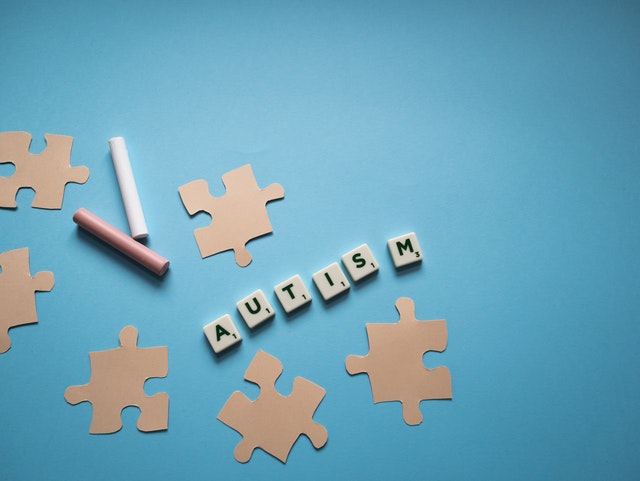Research conducted as part of the NIH-funded Infant Brain Imaging Study Network used magnetic resonance imaging (MRI) to document crucial differences in the visual processing system in the brains of infants who went on to be diagnosed with autism spectrum disorder (ASD).
Autism spectrum disorder is a highly heritable neurodevelopmental disorder that is diagnosed in 1 in 54 children in the United States. Younger siblings of children with autism have an increased chance of developing ASD, where 1 in 5 siblings will be diagnosed with ASD by the age of three.
A study, published in The American Journal of Psychiatry, examined infants with older siblings who have autism to investigate the association between autism spectrum disorder traits and brain development among younger siblings.1
Visual contact between parents and their babies throughout the first years of the child’s life is vital to cognitive, emotional, and social development. This study suggests that this visual interplay is impacted in babies who go on to develop autism.
This study recruited 384 pairs of siblings, of which the older child had already been diagnosed with autism. This meant that the younger sibling had a higher likelihood of developing autism. The researchers then used various MRI approaches to study the brains of the younger siblings at 6, 12, and 24 months of age. They measured brain volume and surface area and white matter integrity in the region of the brain involved with vision (the occipital cortex).
The lead author of the study, Dr Jessica Girault, stated, “We’re beginning to parse differences in infant brain development that might be related to genetic factors. Using MRI, we studied selected structures of brain, the functional relationship between key brain regions, and the microstructure of white matter connections between those brain regions. Findings from all three pointed us to the discovery of unique differences in the visual systems of infants who later developed autism.”2
Dr Girault’s research, published in 2020, showed that younger siblings were much more likely to develop autism in their infancy if their older autistic siblings had higher levels of autistic traits.3 Dr Girault stated, “This suggests that these autistic traits tell us something about the strength of genetic factors for autism within a family. But we couldn’t say much more beyond that. This current study takes our work a step forward.”
The researchers found that brain differences in the visual brain systems of infants who are later diagnosed with autism are associated with inherited genetic factors. Changes in brain size and white matter integrity, and functional connectivity of the visual processing systems of six-month olds are evident well before they show symptoms of autism as toddlers. Moreover, the presence of brain changes in the visual system is associated with the severity of autism traits in their older siblings.
The researchers found brain differences in two parts of the visual processing system: the occipital gyrus, which is important for object recognition, and the splenium, which is vital for communicating between different hemispheric parts of the visual system and for rapidly orienting our attention to things we see around us.
Co-senior author Dr John Pruett, Jr. stated, “It is particularly notable that we were able to demonstrate associations between brain findings in infants and the behaviour of their older siblings with autism. The convergence of brain-wide, data-driven functional connectivity MRI results with the structural and diffusion findings strengthens our confidence in future replication of these discoveries, which could be tested in the new cohort of 250 high-familial likelihood infants we are presently recruiting.”
Co-senior author Dr Joe Piven added, “We think aberrant visual circuitry is a fundamental cog in the cascade of events leading to later autism. We think this circuitry alters how infants experience the world, and how they experience the world alters how their brains subsequently develop. It’s this secondary altered brain development that may result in what we call autism that typically emerges in the latter part of the first and second years of life.”
This study outlines a starting point to understanding how inherited liability for autism spectrum disorder impacts infant brain development. This study highlights the importance of investigating the visual brain system in the first year of life in high-risk infants to detect the likelihood of developing autism based on inherited risk factors. The results also indicate that autism traits in older siblings may foreshadow the emergence of autism spectrum disorder in their younger siblings, particularly if the traits are severe.
References:
1. Girault J, et al. (2022). Infant visual brain development and inherited genetic liability in autism. Am J Psychiatry. Retrieved from: https://ajp.psychiatryonline.org/doi/10.1176/appi.ajp.21101002
2. Visual system brain development implicated in infants who develop autism (2022). EurekAlert! Retrieved from: https://www.eurekalert.org/news-releases/953763 3. Girault J, et al. (2020). Quantitative trait variation in ASD probands and toddler sibling outcomes at 24 months. J Neurodev Disord, 12(5). Retrieved from: https://jneurodevdisorders.biomedcentral.com/articles/10.1186/s11689-020-9308-7
Photo by Polina Kovaleva at Pexels



